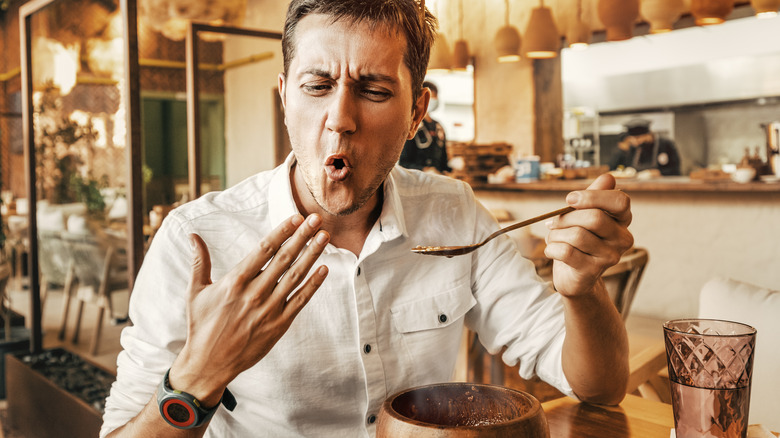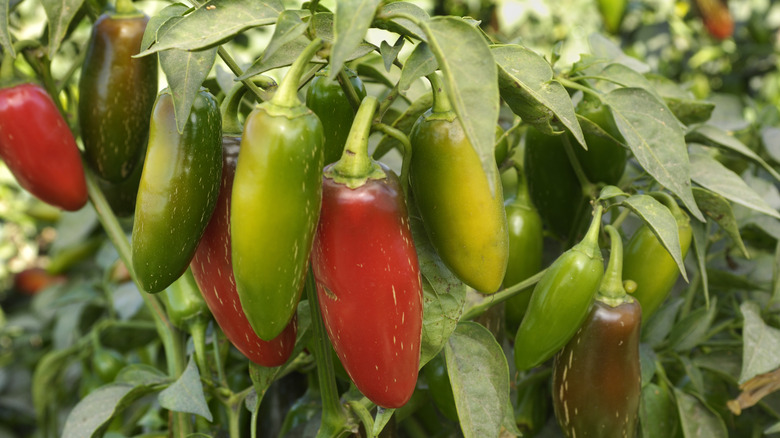How To Pick The Spiciest Jalapeño Peppers At The Store
With a Scoville rating ranging between 2,500 and 8,000 SHUs (aka Scoville Heat Units), jalapeño peppers offer just the right amount of heat without being too overwhelming for most palates, making them the perfect mild stepping stone to spicier options. However, some jalapeños are much hotter than others, which can make selecting them at your local grocery store a bit of a crapshoot. In this case, you can actually evaluate the appearance of the pepper to get an idea of just how spicy it is.
The presence of white lines and marks typically means that the pepper underwent a more stressful growing experience. This stress may increase the concentration of capsaicin in the jalapeño, which is a chemical that gives hot peppers their bite. Accordingly, selecting a jalapeño with lots of stress marks can leave you desperately seeking tips to cool down your mouth after eating spicy food. It also helps to consider the other factors that can influence jalapeño spiciness, as heat levels can fluctuate quite a bit from pepper to pepper.
Reasons why jalapeño spice levels vary
How much water a plant receives can impact its outcome, and jalapeños are no exception. In the event that a pepper plant receives an excess of water, it can result in a much milder flavor. In fact, some jalapeño growers intentionally provide too much water to temper the spice of the pepper and make it palatable to a wider range of people. Keep in mind that roasting jalapeños also reduces spice levels, which is a good option for people seeking a milder experience when eating hot peppers.
Additionally, higher temperatures can make for a hotter pepper. This goes back to the stress factor theory, which posits that hot weather and drought can boost capsaicin and cause a jalapeño to land at the higher end of the Scoville scale. Other factors that influence the hotness of a jalapeño are how many seeds the pepper contains, the genetics of the plant, and the size of the jalapeño's placenta, which contains capsaicin-producing glands.
Are red jalapeños hotter than green ones?
You've probably seen both red and green versions of jalapeños at your local grocery store. You may have even wondered whether the red version is hotter than its green counterpart. Keep in mind that red jalapeños are the same as green, only they've been allowed to fully ripen. In some cases, the lengthier ripening time can result in a hotter pepper due to the increased capsaicin. You may also detect notes of sweetness with red jalapeños, whereas green jalapeños typically have a grassier flavor.
However, this isn't necessarily a hard and fast role. In many cases, red and green jalapeños offer the same level of spiciness, which means maturation time probably doesn't have as big of an impact as the growing conditions of the pepper. Accordingly, don't be fooled into thinking a red pepper is naturally hotter than a green one if you're seeking something extra spicy to include in a classic jalapeño poppers recipe. And always remember, if you're on the hunt for a spicier jalapeño, grab the ones with white lines.


